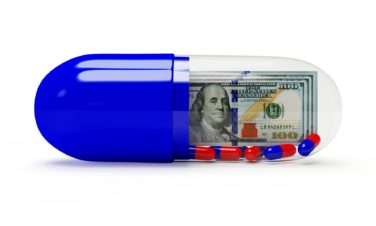When I was an access decision maker at a leading pharmacy benefit manager (PBM), I had a standard methodology I followed when reviewing a product. The safety was most important. A drug may be efficacious in some but not others, but safety is a universal need. Efficacy was next. Why cover a drug that doesn’t work? Cost followed, although as specialty drugs grew in scope and price, it became harder to keep cost in that third spot. Finally, at the very end, was a category I referred to as “Other.” The “Other” category was a mishmash of product attributes such as patient convenience, dosing frequency, pharmacokinetic differences, etc.
Generally, if a product hadn’t convinced me of its value in stages one through three, it probably wasn’t going to change my mind at stage four. However, perspectives change, especially when the environment significantly shifts. COVID-19 is one such shift. It may not mean stage four has surpassed the other stages, but many of the lesser valued aspects of a pharmaceutical product are taking on newfound importance.
COVID-19 has been a healthcare crisis like no other. Without a vaccine or preventative treatment, the best we could do is limit the spread between people via so called “social distancing.” Part of social distancing means minimizing the interpersonal contact that people have with the healthcare system. Elective procedures were cancelled or delayed, routine appointments moved to telehealth or virtual forums, and even prescriptions were delivered to patients’ homes. As a result, there is a newfound interest in the aspects of a pharmaceutical product that minimizes patient contact with settings that may increase the risk of infection. For the astute pharmaceutical marketer, there is an opportunity to message on how a product’s unique attributes may help meet the social distancing need.
Dosing Intervals
In April 2020, a prominent oncology product, normally dosed every three weeks, was approved for dosing every six weeks. In the press release, a company executive noted the advantage a longer dosing interval would have in reducing the amount of exposure a vulnerable cancer patient need have with the healthcare system. The manufacturer has a point.
Patients on infused products often receive treatment in clinics, infusion centers, or hospital outpatient departments. Even when infused at home, many patients may get the infusion from an infusion nurse who may be traveling to many homes, and seeing many patients, each week. A longer dosing interval reduces the exposure a patient has to the healthcare system and other patients. Since many infused products are used to treat patients with conditions that make them high risk, including cancer, autoimmune diseases, or immunodeficiency, being able to showcase that a product has a dosing frequency advantage is a significant selling point during COVID-19.
Monitoring Requirements
During a market research call, a decision maker at a large integrated delivery network (IDN) told me that the monitoring requirements for an antibiotic were now a driver in the system’s product choice decisions. The IDN’s rationale was that an antibiotic that required less monitoring meant fewer interactions with healthcare personnel when a patient was hospitalized, but also when the patient was discharged if still on therapy.
The requirements of monitoring on any drug, beyond antibiotics, could be meaningful in the COVID-19 influenced landscape. Numerous medications have monitoring requirements requiring blood draws, liver function tests, or other assessments. Any or all of these tests will likely require a patient to visit a clinic or testing center, which may expose him/her to other patients. Access stakeholders may find value if a product in a competitive category has an advantage in monitoring requirements over the alternatives.
Dosage Form
The dosage form of the medication itself may have newfound importance. The opportunity to take an oral at home has been a differentiator for certain competitive classes, but often not enough on its own to radically alter a drug class. As patients stay close to home during COVID-19, being able to have medication delivered to a patient’s home versus going to a clinic for drug administration is a positive benefit. Pharmaceutical manufacturers with oral or other self-administered products that are competing with infused drugs should make note of the difference with access customers.
Provider-Administered Products
Even if the dosage form is not enough to change a payer’s preferred product choices, manufacturers may be able to appeal for more open prior authorization criteria that would allow at-risk patients to get a treatment that can be used in the home. Manufacturers of infused products may counter, however, that product administration by a health professional can be helpful in checking in on a patient, particularly during a time when chronic care appointments may be declining. Administration of product also ensures patient compliance, something that may be lost with self-administered medications.
For some diseases, an oral or self-administered option may not be available. However, infused and provider-administered products may differ in the availability of data and potential safety in different settings of care. Provider-administered products that have demonstrated safe and effective use in the home setting may have an advantage over those that require the patient to go to a hospital or clinic. The patient will still be exposed to a healthcare professional, but can avoid exposure with other patients as well as other individuals in situations where public transportation would be required. Manufacturers could consider studying their products in the home setting and generate data to prove safe and effective use.
Lasting Impact
Even when the COVID-19 pandemic ends, the impact it has had on healthcare and society will likely last for years to come. The shared experience of everyone during the COVID-19 crisis will mean messages referencing the pandemic will resonate. Market access stakeholders may be more sensitive to the risk vulnerable patients face when seeking and receiving care.
Pharmaceutical marketers can now elevate product attributes that reduce patient exposure to high-risk situations and increase flexibility of how and where a patient is treated. Safety and efficacy will still be king, but the “Other” could be what puts a product over the top. Such messaging will educate access stakeholders that even the “little things” can make a large difference for the most vulnerable patients.








